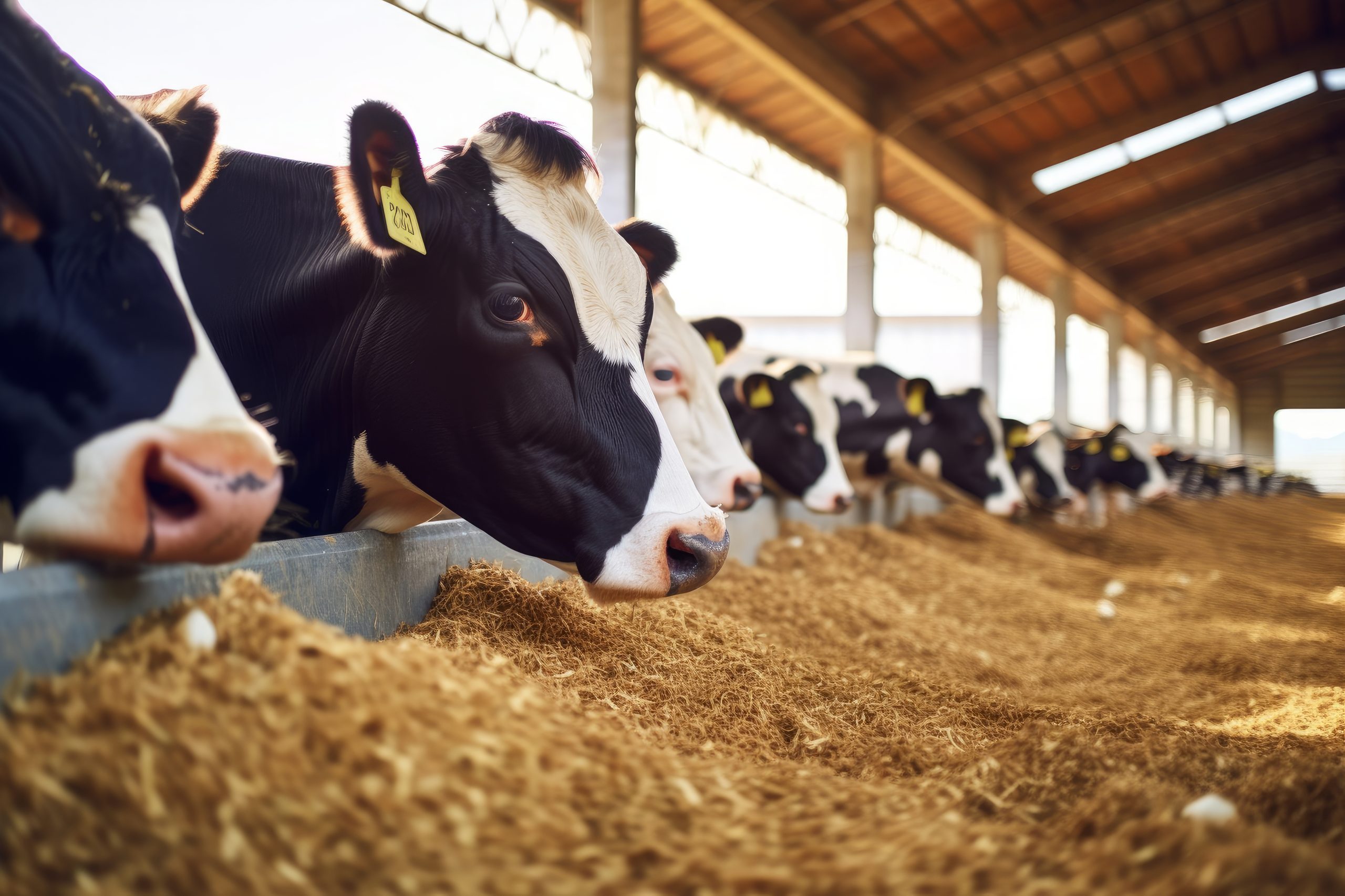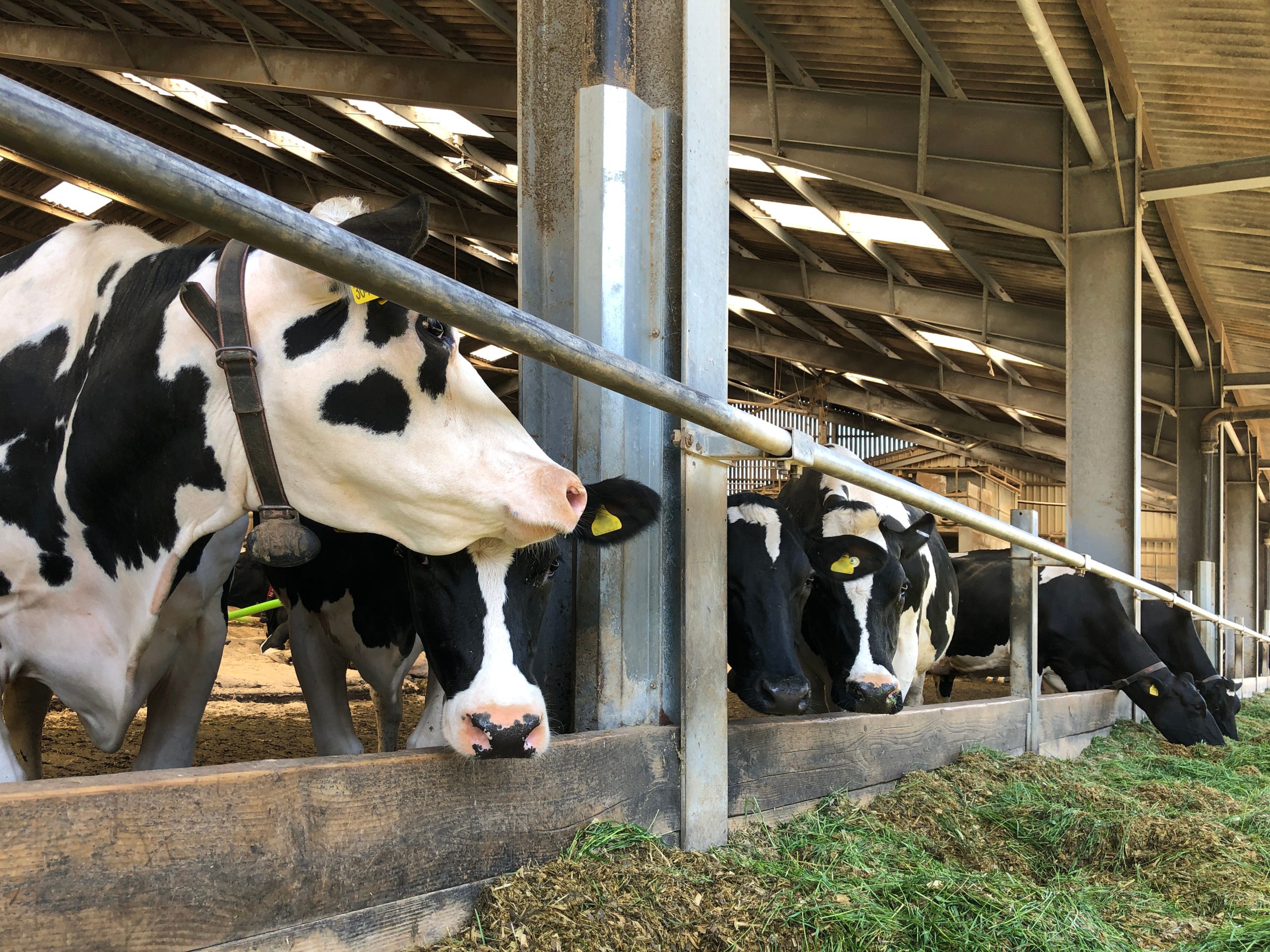Abstract:
As the global population continues to grow and urbanization encroaches on arable land, traditional farming methods are facing unprecedented challenges. To meet the rising demand for food production in Asia, innovative solutions are required. Vertical farming, particularly in the context of fodder production for beef and dairy cattle, presents a compelling opportunity to revolutionize the Asian farming industry. This white paper explores the benefits of vertical farming, with a specific focus on fodder, and references the pioneering work of HydroGreen in developing advanced fodder growth systems tailored to the needs of the beef and dairy sectors in Asia.
Introduction
The Asian farming industry is at a crossroads, facing numerous challenges related to land scarcity, water shortages, climate change, and the need to sustainably increase food production. Traditional farming practices, which rely heavily on horizontal land usage, are no longer sufficient to meet the growing demand for international agricultural products. In this context, vertical farming, with its potential to optimize space and resource utilization, offers a promising solution. This white paper will delve into the myriad benefits of vertical farming, focusing particularly on fodder production and highlighting the role of HydroGreen in shaping the future of agriculture in Asia.
The Rise of Vertical Farming
1. Maximizing Space Efficiency
One of the primary advantages of vertical farming is its ability to maximize space efficiency. In densely populated regions like Asia, arable land is a precious commodity. Vertical farms, through the use of stacked growing layers, allow for a significantly higher crop yield per square meter compared to traditional farming. This is particularly advantageous in urban and peri-urban areas where land is limited and even storing copious amounts of baled alfalfa can take up too much space.
2. Year-Round Crop Production
Vertical farming also enables year-round crop production by creating a controlled environment where factors like temperature, humidity, and light can be optimized for plant growth. This eliminates the constraints of seasonal farming, ensuring a steady supply of fresh produce regardless of external weather conditions. This reliability is crucial for maintaining stable food supplies in Asia’s rapidly expanding urban centers.
3. Reduced Environmental Impact
Compared to conventional agriculture, vertical farming can significantly reduce the environmental impact. It requires less water, no pesticides, and limited land use, which leads to lower soil erosion and decreased exposure to pests and diseases. Additionally, the controlled environment minimizes the need for synthetic fertilizers, further reducing the ecological footprint of agriculture.
Fodder Production and the Asian Livestock Industry
1. Growing Demand for Livestock Products
The Asian livestock industry is on the rise, driven by increasing consumer demand for meat and dairy products. However, the conventional practice of grazing and conventional fodder production methods is straining the available land and water resources. To meet the growing demand while ensuring sustainability, there is a pressing need for innovative approaches to livestock feed production.
2. HydroGreen: A Pioneer in Fodder Production
HydroGreen, a leading company in the field of vertical farming, has recognized the potential for transforming the Asian livestock industry by revolutionizing fodder production. Their advanced vertical, indoor growth systems allow for the efficient cultivation of high-quality feed for beef and dairy cattle.
3. Key Features of HydroGreen’s Fodder Growth Systems
HydroGreen’s fodder growth systems offer several key features that make them ideal for the Asian context:
a. Rapid Growth
HydroGreen’s systems enable the rapid growth of nutritious fodder, with some systems producing feed in as little as six days. This speed ensures a consistent and timely supply of feed for livestock.
b. Space Efficiency
By utilizing vertical space, HydroGreen’s systems require minimal land area. This is particularly advantageous in regions where arable land is scarce, as is often the case in densely populated parts of Asia.
c. Water Efficiency
Water scarcity is a critical issue in many Asian countries. HydroGreen’s systems are designed to be highly water-efficient, using significantly less water than traditional fodder production methods.
d. Nutrient-Rich Fodder
HydroGreen’s hydroponic systems allow for precise control of nutrient delivery to plants. This results in highly nutritious fodder, ensuring the health and productivity of beef and dairy cattle.
e. Climate Control
The controlled environment within HydroGreen’s systems eliminates the dependence on weather conditions, enabling year-round fodder production regardless of external factors.
4. Benefits of HydroGreen’s Fodder Systems for Asian Farmers
HydroGreen’s innovative fodder growth systems offer several benefits to Asian farmers, including:
a. Increased Livestock Productivity
Nutrient-rich fodder produced by HydroGreen’s systems enhances the health and productivity of beef and dairy cattle. This ultimately leads to higher meat and milk yields, benefiting farmers economically.
b. Reduced Environmental Impact
The water-efficient and controlled environment of HydroGreen’s systems reduces the environmental impact of fodder production. This aligns with the growing emphasis on sustainability in agriculture.
c. Space Optimization
HydroGreen’s vertical farming approach optimizes space utilization, making it suitable for farms with limited land resources. This is particularly valuable in densely populated Asian regions.
d. Weather Independence
By eliminating the dependence on weather conditions, HydroGreen’s systems ensure a steady and reliable supply of fodder throughout the year.
Case Studies and Success Stories
1. HydroGreen’s Impact in Asia
HydroGreen has already made significant strides worldwide, partnering with various international farms to implement their innovative fodder growth systems. These partnerships have led to remarkable improvements in livestock productivity and sustainability.
2. A Sustainable Future
The success of HydroGreen’s systems at the international scale demonstrates their potential to revolutionize the livestock industry by providing a sustainable solution to the increasing demand for meat and dairy products.
Conclusion
Vertical farming, with a particular focus on fodder production, offers an array of benefits for the Asian farming industry. By maximizing space efficiency, enabling year-round crop production, and reducing the environmental impact of agriculture, vertical farming presents a viable solution to the challenges faced by the region’s growing population and urbanization.
HydroGreen’s pioneering work in developing advanced fodder growth systems tailored to the needs of the beef and dairy sectors in Asia exemplifies the potential of vertical farming to transform the industry. Their rapid and space-efficient systems, combined with the ability to control nutrient delivery and climate, have already demonstrated significant positive outcomes for farmers in the region.
As the Asian farming industry continues to evolve, embracing innovative solutions like vertical farming will be essential for meeting the rising demand for food while ensuring sustainability and minimizing environmental impact. HydroGreen’s recent successes serve as a testament to the promising future of vertical farming in the region and its potential to shape the future of agriculture in a rapidly changing world.
백서: 아시아 농업 산업을 위한 사료 중심의 수직 농업의 이점
추상적인
세계 인구가 계속 증가하고 도시화가 경작지를 잠식함에 따라 전통적인 농업 방식은 전례 없는 도전에 직면해 있습니다. 아시아의 식량 생산에 대한 증가하는 수요를 충족하려면 혁신적인 솔루션이 필요합니다. 특히 쇠고기와 젖소를 위한 사료 생산의 맥락에서 수직 농업은 아시아 농업 산업에 혁명을 일으킬 수 있는 강력한 기회를 제공합니다. 이 백서는 특히 사료에 중점을 두고 수직 농업의 이점을 탐구하고, 아시아 쇠고기 및 유제품 부문의 요구에 맞는 고급 사료 성장 시스템을 개발하는 HydroGreen의 선구적인 작업을 언급합니다.
소개
아시아 농업 산업은 토지 부족, 물 부족, 기후 변화, 지속 가능한 식량 생산 증대 필요성과 관련된 수많은 과제에 직면해 있는 기로에 서 있습니다. 수평적 토지 이용에 크게 의존하는 전통적인 농업 관행은 증가하는 국제 농산물 수요를 충족시키기에 더 이상 충분하지 않습니다. 이러한 맥락에서 공간과 자원 활용을 최적화할 수 있는 잠재력을 지닌 수직 농업은 유망한 솔루션을 제공합니다. 본 백서는 특히 사료 생산에 초점을 맞추고 아시아 농업의 미래를 형성하는 데 있어 HydroGreen의 역할을 강조하면서 수직 농업의 수많은 이점을 탐구할 것입니다.
수직 농업의 부상
1. 공간 효율성 극대화
수직 농업의 주요 장점 중 하나는 공간 효율성을 극대화하는 능력입니다. 아시아와 같이 인구 밀도가 높은 지역에서는 경작지가 귀중한 상품입니다. 수직 농장은 적층형 재배층을 사용하여 기존 농업에 비해 평방미터당 작물 수확량이 훨씬 더 높습니다. 이는 토지가 제한되어 있고 많은 양의 알팔파를 저장하는 것조차 너무 많은 공간을 차지할 수 있는 도시 및 도시 주변 지역에서 특히 유리합니다.
2. 연중 작물 생산
또한 수직 농업은 온도, 습도, 빛과 같은 요소가 식물 성장에 최적화될 수 있는 통제된 환경을 조성함으로써 연중 내내 작물 생산을 가능하게 합니다. 이를 통해 계절별 농업의 제약을 없애고 외부 기상 조건에 관계없이 신선한 농산물을 안정적으로 공급할 수 있습니다. 이러한 신뢰성은 빠르게 성장하는 아시아 도시 중심부에서 안정적인 식량 공급을 유지하는 데 매우 중요합니다.
3. 환경에 미치는 영향 감소
수직 농업은 기존 농업에 비해 환경에 미치는 영향을 크게 줄일 수 있습니다. 물이 덜 필요하고 살충제가 없으며 토지 이용이 제한되어 토양 침식이 줄어들고 해충 및 질병에 대한 노출이 줄어듭니다. 또한 통제된 환경은 합성 비료의 필요성을 최소화하여 농업의 생태발자국을 더욱 줄입니다.
사료생산과 아시아 축산산업
1. 축산물 수요 증가
아시아 축산업은 육류 및 유제품에 대한 소비자 수요 증가로 인해 성장세를 보이고 있습니다. 그러나 전통적인 방목 관행과 전통적인 사료 생산 방법은 이용 가능한 토지와 수자원을 압박하고 있습니다. 지속 가능성을 보장하면서 증가하는 수요를 충족하려면 가축 사료 생산에 대한 혁신적인 접근 방식이 절실히 필요합니다.
2. 하이드로그린(HydroGreen): 사료 생산의 선구자
수직 농업 분야의 선두 기업인 하이드로그린(HydroGreen)은 사료 생산에 혁명을 일으켜 아시아 축산업을 변화시킬 수 있는 잠재력을 인식했습니다. 첨단 수직 실내 재배 시스템을 통해 쇠고기와 젖소를 위한 고품질 사료를 효율적으로 재배할 수 있습니다.
3. 하이드로그린 사료성장 시스템의 주요 특징
HydroGreen의 사료 재배 시스템은 아시아 환경에 이상적인 몇 가지 주요 기능을 제공합니다.
ㅏ. 빠른 성장
HydroGreen의 시스템은 영양가 있는 사료의 급속한 성장을 가능하게 하며 일부 시스템은 단 6일 만에 사료를 생산합니다. 이러한 속도는 가축에게 일관되고 시기적절한 사료 공급을 보장합니다.
비. 공간 효율성
수직 공간을 활용함으로써 HydroGreen의 시스템은 최소한의 토지 면적을 필요로 합니다. 이는 아시아의 인구 밀도가 높은 지역과 같이 경작지가 부족한 지역에서 특히 유리합니다.
씨. 물 효율성
물 부족은 많은 아시아 국가에서 심각한 문제입니다. HydroGreen의 시스템은 전통적인 사료 생산 방법보다 물을 훨씬 적게 사용하여 물 효율성이 높게 설계되었습니다.
디. 영양이 풍부한 사료
HydroGreen의 수경 재배 시스템을 사용하면 식물에 영양분을 전달하는 것을 정밀하게 제어할 수 있습니다. 그 결과 영양가가 높은 사료가 생산되어 쇠고기와 젖소의 건강과 생산성이 보장됩니다.
이자형. 기후 제어
HydroGreen 시스템 내의 통제된 환경은 기상 조건에 대한 의존성을 제거하여 외부 요인에 관계없이 연중 내내 사료 생산을 가능하게 합니다.

